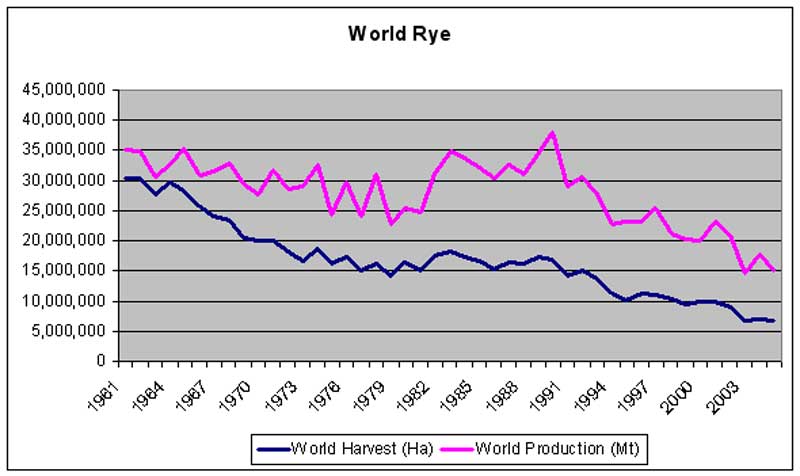![]() Species |
Rice |
Maize |
Wheat |
Barley |
Oats |
Foxtail Millet |
Pearl Millet |
Rye |
Sorghum |
Wild Rice |
Brachypodium |
Oryza Species |
Grape |
Arabidopsis
Species |
Rice |
Maize |
Wheat |
Barley |
Oats |
Foxtail Millet |
Pearl Millet |
Rye |
Sorghum |
Wild Rice |
Brachypodium |
Oryza Species |
Grape |
Arabidopsis
(For best viewing use Netscape/Mozilla)
Figure 1* |
Figure 2* - Global Rye Production Map
|
Rye's affinity for cool weather is reflected in the production map (Figure 2). Rye can be grown in a wider range of environmental conditions than any other small grain, from Scandinavia to southern Chili, as well as at high elevations along the equator (4, 7). However, it cannot survive in flooded areas during wintertime (7) and it is rare in tropical and subtropical countries (2). The top 10 rye-producing countries grow and harvest almost 90% of the global rye production. Poland, Germany and the Russian Federation are the three largest growers, and they also have the greates variance in their production. Figure 2 (above right) shows production levels of different countries across the globe. Together South America and Africa produce less than 10% of the world supply.
Rye growing areas and harvest have diminished by more than half (see Figures 3 & 4) - from 35,000,000 MT on 30,000,000 hectares in 1961 to 15,000,000 MT on 7,000,000 hectares in 2005. Rye seems to be the least significant cereal crop for production (see Cereal Statistics) but crop improvement techniques are still being used to increase yields and defeat pests. Modern harvest equipment is not built to manage the significant height of rye, and the lack of dwarf varieties has lead to the decline in production (1)
Figure 3* |
For more information on global rye production and trends see:
|